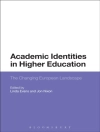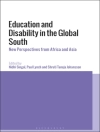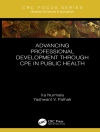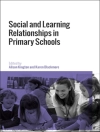‘This book makes the reader think deeply about the role of curriculum planning and its connection to assessment in this age of accountability.’
—J. Jeannette Lovern, Associate Professor of Curriculum and Instruction
Eastern Kentucky University
‘For educators who want students and schools to be successful, this book provides a clear and proven process to accomplish this goal. It is succinct, yet packed with what′s really important to create, develop, assess, and lead curriculum.’
—Jane Mc Donald, Education Consultant in Leadership Development
The classic book on curriculum alignment—with new guidance for today′s educational leaders!
The issue of balancing testing, curriculum design, and teaching practices is a pressing one for today′s schools. Now in its third edition, this influential book on developing and aligning curriculum is updated with new insights on providing effective curriculum leadership, increasing student success, and closing the achievement gap.
Addressing the fundamentals of curriculum design in the context of a standards-based environment, Fenwick W. English focuses on how administrators and teachers can best collaborate to create a high-quality curriculum for all students. Readers will find:
- Guidance on curriculum mapping and other user-friendly tools
- New information on differentiating teaching, learning, and assessment to meet the needs of special education students, English language learners, and others
- Additional content on addressing cultural differences in curriculum content and assessment practices
- A new chapter on the challenges educators face in their roles as curriculum leaders
Inhoudsopgave
Preface: America’s Continuing Educational Canterbury Tales
Acknowledgments
About the Author
Introduction to the Third Edition
1. The Function of Curriculum in Schools
1.1 What Is Curriculum?
1.2 Curriculum Design and Delivery
1.3 Curriculum Coordination and Articulation
1.4 Combining Design and Delivery Issues in Schools
1.5 Formal, Informal, and the Hidden Curriculum
1.6 Curriculum and the Cultural Arbitrary
1.7 Conventional Practices and Complaints About Curriculum
1.8 The Necessary Requirements of an Imperfect Curriculum
1.9 A Clarifying Model of the Critical Curricular Relationships and Terms
2. A Template for Curriculum Construction
2.1 The Traditional View of Developing Curriculum
2.2 Using a Needs Assessment to Develop a Curricular Framework
2.3 Constructing Curriculum With Gap Data
2.4 Constructing “User Friendly” Curriculum Work Plans
2.5 Moving From Curriculum Content to Work Tasks
2.6 Constructing “User Friendly” Curriculum Guides
2.7 Essential Elements in Curriculum Guides
2.8 Setting Content Priorities and Expressing Time Values
2.9 A Word About Sequence and Stress
2.10 A Recommended Curriculum Guide Format
3. Aligning the Curriculum
3.1 The Process of Alignment by Frontloading
3.2 The Process of Alignment via Backloading
3.3 How to Do Alignment
3.4 Other Issues in the Alignment Procedure
4. The Challenge of Curriculum Leadership in the Teaching and Testing Nexus
4.1 Considering The Full Responsibility for Curriculum Leadership
4.2 Who Benefits From the Perpetuation of the Cultural Capital Embraced by State Imposed Accountability Models?
4.3 Avoiding Deficit Mindsets, Models, and Cultural Marginalization of Others
4.4 Not All Data Are Valuable or Relevant
4.5 Avoiding Outmoded Management Models
4.6 Understanding the Drawbacks of Top-Down Supervisory Approaches
4.7 The Nexus of Curriculum Leadership
4.8 Some Concluding Thoughts
Glossary of Terms
References
Index
Over de auteur
Fenwick W. English (Ph.D.) is the R. Wendell Eaves Senior Distinguished Professor of Educational Leadership in the School of Education at the University of North Carolina at Chapel Hill, a position he has held since 2001. As a scholar/practitioner he has held positions as a school principal and superintendent of schools in California and New York and as a department chair, dean, and vice-chancellor of academic affairs at universities in Ohio and Indiana. He is the former President of the University Council of Educational Administration (UCEA) and of the National Council of Professors of Educational Administration (NCPEA). His research has been reported in national and international academic forums. He edited the 2006 SAGE Encyclopedia of Educational Leadership and Administration, the 2009 SAGE Library of Educational Thought and Practice: Educational Leadership and Administration; and the 2011 SAGE Handbook of Educational Leadership (2nd Ed.). In 2013, he received the Living Legend Award from NCPEA for his lifetime contribution to the field of educational leadership.












